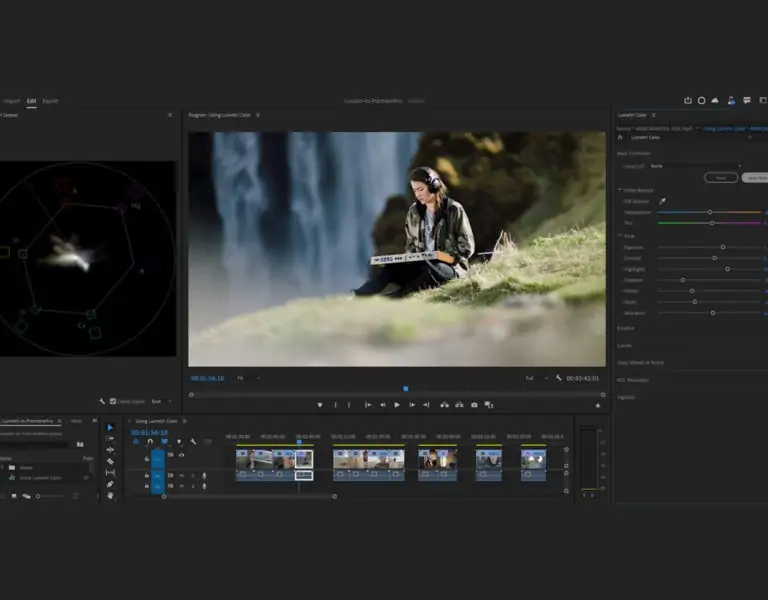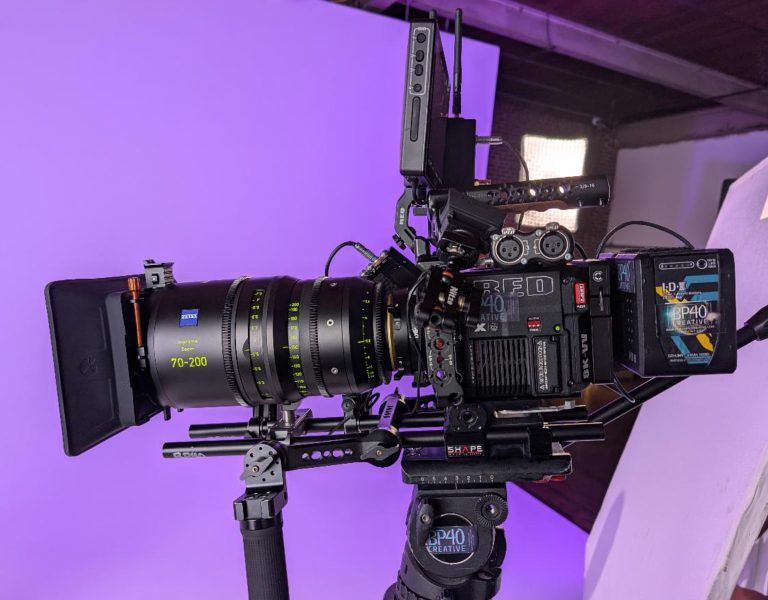
Atomos has announced two new additions to its offerings ahead of IBC.
Shogun series
Following hot on the heels of the new Ninja models announced last month, both devices incorporate a completely new operating system – AtomOS 11 – that delivers a host of new features, including EL Zone exposure referenced colorizsd image, ARRI False Colour, and new scheduled playback and recording tools.
The new Shoguns include more codecs as standard: 6K Apple ProRes RAW (8K with Shogun Ultra), Apple ProRes, DNxHD as well as H.265, which was previously available only as a paid option. For better consistency, Shogun and Shogun Ultra have the same differentiating features as the new Ninja and Ninja Ultra.
The key differences between the new Shogun and Ninja lines are the former’s brighter, 2000nit 7-inch screen, plus its fully integrated connectivity. Because Shogun has both 12G-SDI and HDMI inputs and outputs, it can be used for cross-conversion, unlike a Ninja fitted with Atomos Connect. Shogun has more power options too, with NP battery slot and an integrated 2.1mm locking jack DC input socket.
Shogun Ultra is ideal for use with cinematic cameras and can record full-quality files to Apple ProRes RAW up to 4K 60p while at the same time recording HD 60p to H.265, and supporting automatic matching filenames, timecode and record trigger from many popular models of ARRI, Canon, RED and Sony cameras.
Both Shogun and Shogun Ultra models have the new 4K camera to cloud mode that lets you record and upload much higher quality bitrate H.265 video with higher framerates and customized parameters. The files are lightweight enough for camera to cloud workflows, but more than good enough quality for immediate use on social media, sports reporting or news gathering.
Both Shogun units can take advantage of Atomos RemoteView – a brand new technology where users can share live views from your Atomos screen with other Atomos monitors, as well as with iPads, Macs and Apple TVs wirelessly. You can monitor what’s happening on-set and look through any connected camera taking the shot, from anywhere in the world. RemoteView is a major new feature for production teams, with features never seen before at this price point.
Shogun Ultra features lower latency cloud connectivity and higher throughput, thanks to Wi-Fi 6E integration.
“With both our Ninja and Shogun lines we are bringing new functionality to market, and at the same time making our different product offerings easier to understand,” said Trevor Elbourne, CEO of Atomos. “Ninja and Shogun offer matched performance, but the main differentiation is in screen size and brightness – 5-inch, 1000 nit versus 7-inch, 2000 nit – and cloud connectivity – modular or integrated.”
“We want to offer our customers a clearer choice of price point versus performance, exactly as we do with new Ninja and Ninja Ultra,” added Elbourne.
AtomOS 11 will also be made available for free to existing Shogun Connect users via a firmware update. Going forward, Shogun Connect will be superceded by Shogun Ultra.
Atomos Edit extension
Atomos Edit, Atomos’ browser-based, collaborative video editor, allows users to upload media in the field directly from any connected Atomos device (via Atomos Cloud Studio), edit, and then choose to immediately publish direct to YouTube or Vimeo. Alternatively, users can export a sequence via an XML file to an NLE such as Adobe Premiere Pro.
To enhance and streamline workflows for Adobe customers, Atomos has developed an extension for Atomos Edit whereby the browser-based NLE appears as a panel directly inside Premiere Pro.
Editors will see content being uploaded and can access previously edited sequences from Atomos Edit, in real-time. Then, they can drag this content straight into a Premiere Pro project.
“This incredibly simple but efficient end-to-end workflow has been our vision for quite some time. It’s very exciting to finally be able to put this into our customers’ hands, and we can’t wait to see what they do with it,” said Trevor Elbourne, CEO of Atomos. “While users capture content with their connected Atomos device, footage is uploaded to the cloud in near real-time. After editing collaboratively with our browser-based Atomos Edit NLE to create sequences, they can immediately start creatively editing directly within Premiere Pro. Connecting the Atomos and Adobe ecosystems like this will change the rules for millions of existing and new Adobe Creative Cloud users.”
Users can simultaneously capture from multiple Atomos connected products, funnelling content into Atomos Edit to create sequences and rough edits. Then Adobe Premiere editors can take these sequences and finish the content using all the facilities within Adobe Creative Cloud applications.
“With the new Atomos Edit extension panel for Premiere Pro, editors can enjoy the convenience of seamless integration for rough cut workflows directly into Premiere Pro,” said Sriram Iyer, head of video products and partnerships at Adobe. “The panel bridges the gap for customers needing quick edits with transition effects to sophisticated and creative editing capabilities available within Premiere Pro.”
















